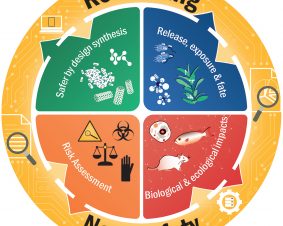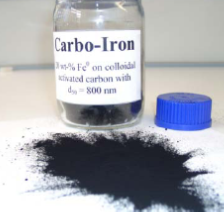 >
Spotlight January 2022: Methods, models, mechanisms and metadata
>
Spotlight January 2022: Methods, models, mechanisms and metadata
For the new year, we are presenting no “classic” paper here, but would like to point out an editorial: Methods, Models, Mechanisms and Metadata: Introduction to the Nanotoxicology Collection at F1000 Research.
This editorial introduces the F1000Research Nanotoxicology Collection, where best practices can be collected in the form of original research reports, including no-effect studies, protocols and methods papers, software reports and systematic reviews. The aim of the collection is to provide an open access platform for nanotoxicology researchers to support an improved culture of data sharing and documentation of evolving protocols, biological and computational models, software tools and datasets that can be used and built upon to develop predictive models and in-silico nanotoxicology and nanoinformatics.
F1000Research (https://f1000research.com/) is an open-research publishing platform for scientists, academics and clinicians, enabling rapid publication of articles and other research outputs without editorial interference. All articles benefit from transparent peer review and editorial guidance to make all source data openly available.
Original publication:
Lynch I, Nymark P, Doganis P et al. Methods, models, mechanisms and metadata: Introducing the Nanotoxicology collection at F1000Research [version 1; peer review: not peer reviewed] F1000Research 2021, 10:1196 https://doi.org/10.12688/f1000research.75113.1

Weitere Spotlights
Spotlight November 2021: Safe Materials from Scratch – Safe-by-Design in Materials Research
Advances in the field of materials science continue to amaze us with nanoscale materials with extraordinary chemical, electrical, optical, and numerous other properties. However, some nanoscale materials have different toxicological profiles compared to the same bulk material. Since safety issues are usually addressed just before launching a product into the market, safety issues may be […]
Read moreSpotlight Juli 2020: “Nanosafety – More than just regulatory processes”
Nanosafety is more than just a compulsory aspect of nanomaterials research and regulation. This research area also has great potential to drive new innovations. It is exactly this perspective that is addressed in the special issue “Rethinking Nanosafety: Harnessing Progress and Driving Innovation” by Chen et al. 2020. The article illustrates that especially in the field of […]
Read moreSpotlight May 2022: Nano-ghosts” – Risk assessment of submicron-sized particles in food biased towards fictional “nano”
The European Commission has issued a ban on the colorant titanium dioxide in food. Titanium dioxide, which provides a nice shine and bright white color, can potentially damage genetic material. We chose a review article from 2022 for the May 2022 Spotlight that addresses the risk assessment of food-grade titanium dioxide (E171) and the resulting […]
Read moreSpotlight September 2020: Groundwater remediation with Carbo-Iron® – Risk or Benefit?
In September we would like to present a paper of the BMBF project Fe-Nanosit. The project dealt with the use of iron-containing nanomaterials in groundwater and wastewater remediation. A comprehensive assessment and weighing of benefits and possible environmental risks resulting from the application is now presented by the project partners in this paper. Groundwater is indispensable for the […]
Read more

